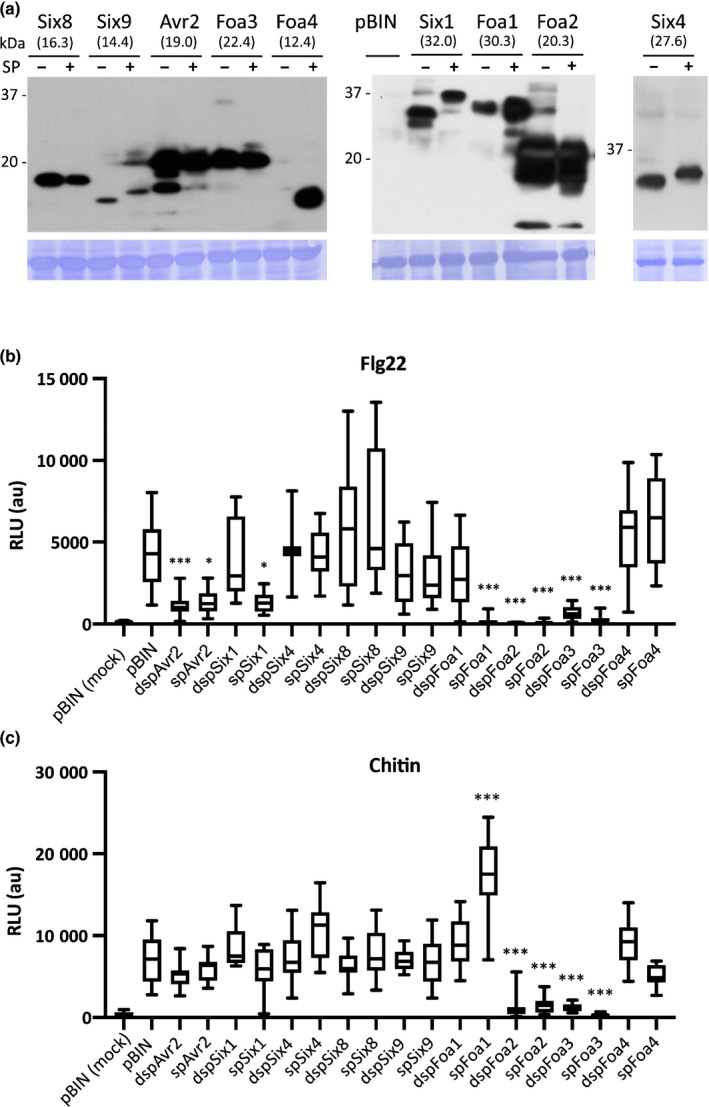Fig. 2.

Several intracellularly or extracellularly acting Fusarium oxysporum effectors alter the flg22‐and chitin‐triggered ROS burst. (a) Western blots showing accumulation of candidate effectors expressed in Nicotiana benthamiana by agroinfiltration. Presence and absence of the signal peptide sequence in the plasmids used is indicated by (+) and (−), respectively. Molecular weight (kDa) markers are shown on the left. The predicted molecular sizes of the fusion proteins are indicated. Equal loading is verified by Coomassie staining of the blots. (b) Flg22‐triggered reactive oxygen species (ROS) generation in N. benthamiana leaves expressing the various candidate effectors. Presence and absence of their signal peptide is indicated by the prefix ‘sp’ and ‘dsp’. pBIN, empty vector control containing an Agrobacterium strain carrying a binary vector without insert. Boxes extend from the 25th to the 75th percentile, whiskers from lowest to highest values, bar indicates the median; n = 16 leaf discs. (c) Chitin‐triggered ROS generation in N. benthamiana leaves expressing the various candidate effectors. Boxes extend from the 25th to the 75th percentile, whiskers from lowest to highest values, bar indicates the median; n = 16 leaf discs. Statistically significant differences to the flg22‐ and chitin‐treated empty vector controls are indicated (one‐way ANOVA: *, P < 0.05; ***, P < 0.001). The experiment was repeated twice with similar results. The second replicates are shown in Supporting Information Fig. S1b,c). Suppression of flg22‐triggered ROS by Foa1, Foa2 and Foa3 was observed in at least three independent experiments.
